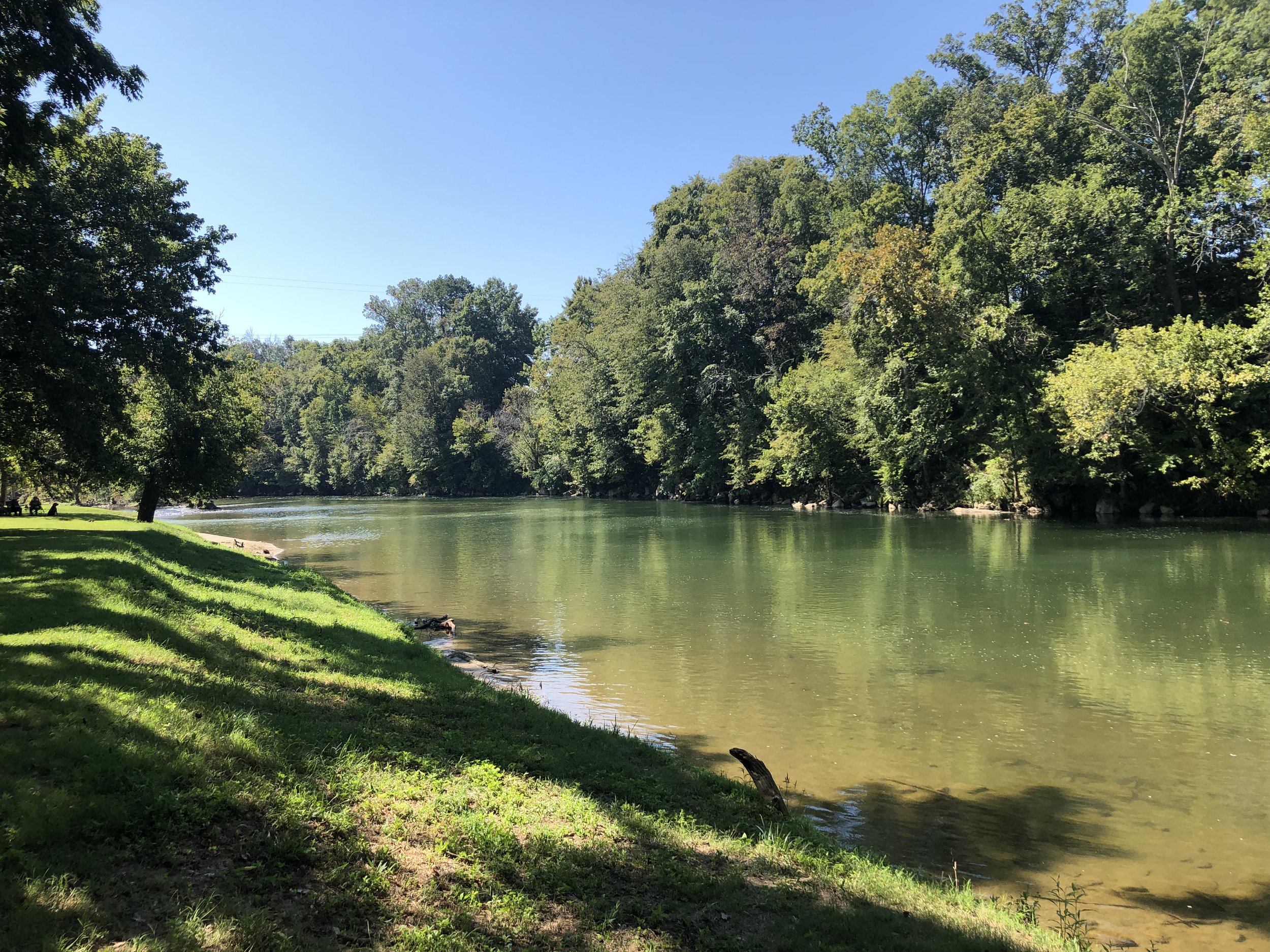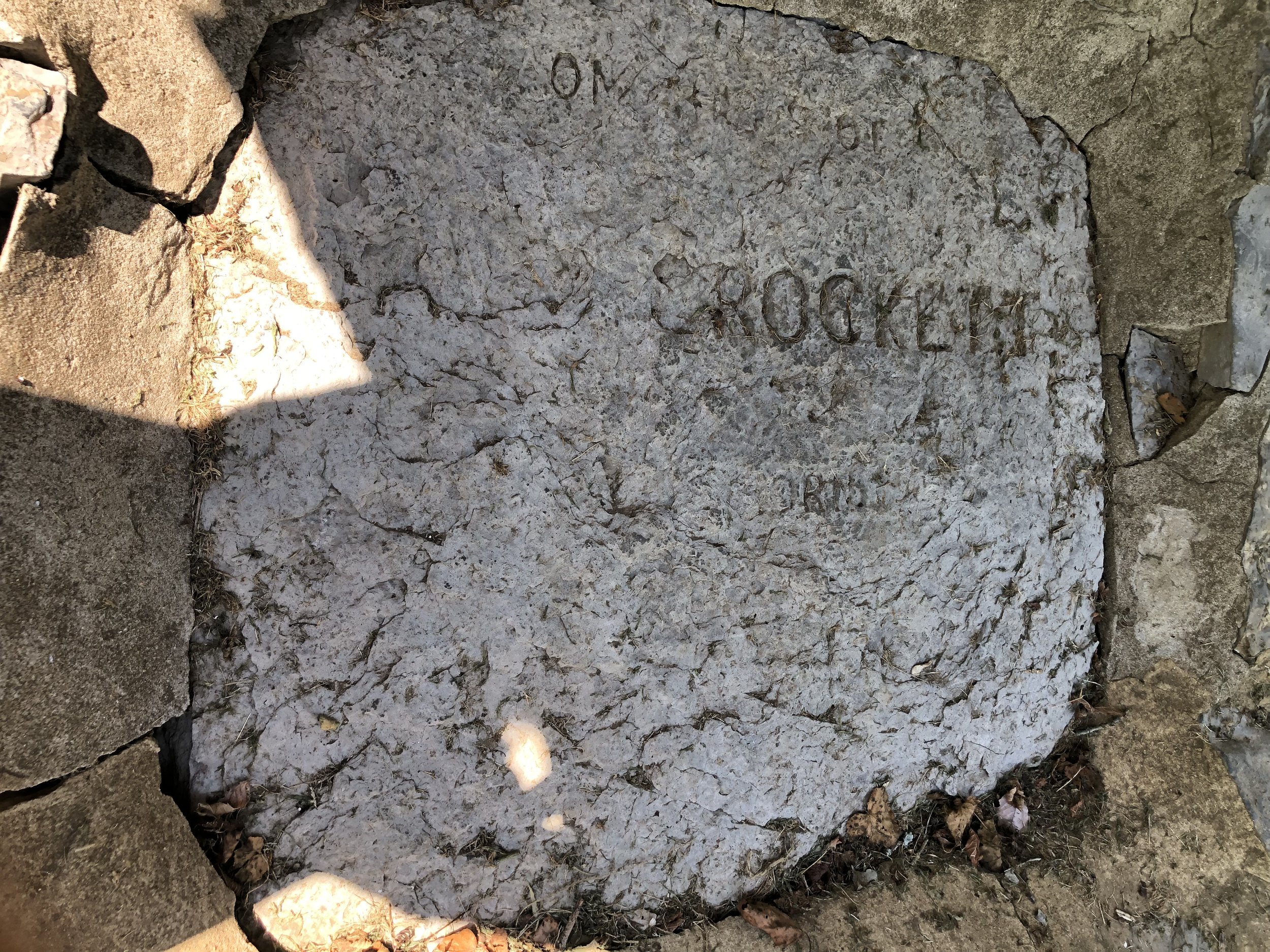"Born On A Mountaintop In Tennessee"
The first thing to note about the birthplace of David “Davy” Crockett is that it is NOT on a mountaintop, though it is in the mountains of Tennessee. The second is that there are no signs announcing the David Crockett Birthplace State Park until you are almost there. If you go there, it is because you have sought the place out, not because you saw a sign and thought “Hmm, let’s go see that while we are in the vicinity.” Located about two miles southwest of the unincorporated community of Limestone, Tennessee (population 6,071), on the Nolichucky River, it is a beautifully maintained state park with facilities for camping and picnicking. It just isn’t very well advertised. For example, the interstate exit I took to get to the Crockett birthplace park did not mention ole Davy at all. Instead, it touted the Andrew Johnson National Historic Site (which is something like 10 miles past the Crockett birthplace park). Recall that Johnson was the first President of the United States to be impeached (back when impeachment meant something) and avoided conviction and removal from office by only one vote in the Senate. On the other hand, Davy Crockett died a martyr’s death at the Alamo. Go figure.
The Nolichucky River.
Marker near the entrance of the park.
Nevertheless, we found the place, after a pleasant drive through a beautiful farming area. We saw fields of peas, beans, and some tobacco on our way to the park.
Upon entering the park, one finds the camping area to the right and a massive swimming pool to the left. A bit further down Davy Crockett Park Road is the picnic area. Past that, on the left, is the visitor’s center, which we visited on the way out. It is primarily a place to buy tee shirts, caps, and the like. I was sorely tempted to buy a coonskin cap but restrained myself.
The homestead is straight ahead on Davy Crockett Park Road. I should point out that the location is where Davy Crockett was born, but that all the buildings, animal pens, etc. are reconstructions. They are made as accurately as possible, but nothing at the park is original, save the limestone front step to the cabin. The step was engraved and placed at the location around 1896, to mark the 100th birthday of Davy Crockett. Weather has rendered most of the engraving unintelligible.
The limestone front step.
The Crocketts were tenant farmers. Most of the proceeds from the sale of the cash crops went to the landlord, Colonel Gillespie. The cash crops planted there today are varieties that would have been planted more than 200 years ago. I was able to recognize the tobacco plants, but they did not look like the bright-leaf tobacco with which I am familiar. I have no idea where they were able to find seeds for these strains of plants.
Cash crops
In addition to the cash crops, the Crocketts maintained a garden for themselves. They grew produce, herbs, and medicinal plants.
Subsistence garden
Cabin exterior
The cabin itself proved a mystery to me. You can see from the photos that it was a one-room affair, with one bed for the adults and infant children. The mystery is: given this sleeping arrangement, how did the Crocketts manage to sire nine children? The tour guide gave us a partial answer: the older children slept out in the lean-to when the weather was fair. Those cold winter months must have seemed longer than they were.
Cabin interior
Cabin interior
Cabin interior
The lean-to. I pity those older kids.
The cabin was not built to last. The tour guide said that the most valuable components of the cabin, the components that didn’t come from the forest, were the nails. When it was necessary to build a new, bigger cabin, the old cabin was simply burnt down to the ground. The settlers then sifted through the ashes for the nails.
There were two animal pens, one for the pigs, goats, sheep and chickens, and one for the beasts of burden. The only animals I saw, besides our traveling companion Lucy, were two donkeys, a mother and son pair.
Animal pen
Animal pen for beasts of burden.
It was a pleasant day trip. We were fortunate to have fine weather. We took a few photos of the mountains at an overlook. To be honest, it wasn’t the most impressive view of the day, but that couldn’t be helped.
My traveling companions.
I suppose we should have soldiered on to the Andrew Johnson National Historic Site, but Andrew just doesn’t do much for me. He was drunk at his inauguration as Vice-President. Six weeks later, he was the President. It is not clear to me that he had sobered up by then. On the plus side of the ledger, he did favor Lincoln’s approach to Reconstruction, which caused friction with the Radical Republicans who sought the bitter cup of vengeance for the former Confederacy.
Okay, maybe I will visit his Historic Site one of these days.
In the meantime, does anyone remember this tune, and is anything in this ballad accurate?













